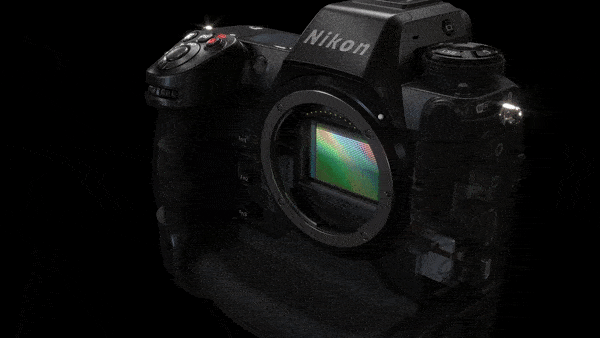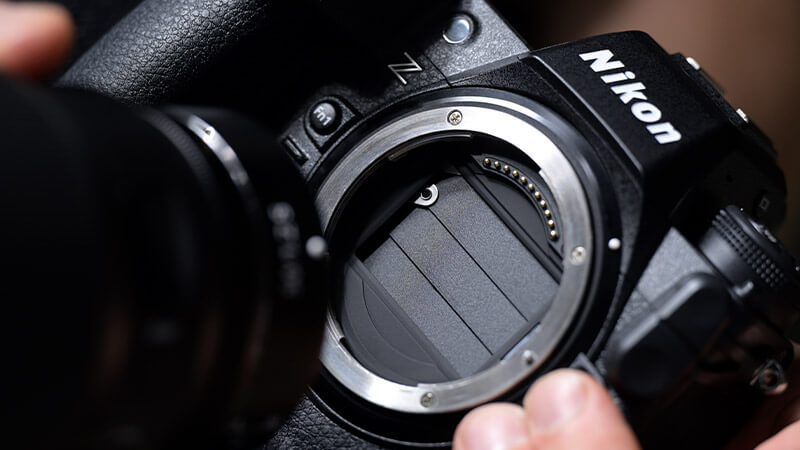Why the incredible Nikon Z9 won our camera of the year award
The Z9 is a peerless pro powerhouse... for now

Every so often in tech, you see a passing of the torch from one technology to another – and that's what I saw when I was handed the Nikon Z9 for the first time.
It wasn't quite as obvious as some of the technological step changes I've witnessed; the Z9 still looks like a massive DSLR from the 90s. But as soon as I started using the full-frame flagship, it was clear – the professional DSLR was dead, and mirrorless power had rocketed cameras into a new age.
Beyond all of the headline specs (45.7MP raw photos at 20fps, 8K/60p video, no mechanical shutter at all), part of the thrill of seeing the Z9 that first time was a sense of surprise. Nikon is no underdog, but its mirrorless cameras had been leapfrogged by the Sony A1 and Canon EOS R3. There were serious questions about whether it could bridge the technological gap. And then this historically slow, methodical company grabbed a jet pack and flew over the competition with the Z9.

Naturally, this isn't the result of Nikon discovering the camera equivalent of Biff's sports almanac from Back to the Future 2. The Z9 is based on current mirrorless technology and next year it may get leapfrogged again – by the long-rumored Canon EOS R1, perhaps.
But for now, it's the most powerful camera ever made. And that's because Nikon successfully combined its traditional strengths with cutting-edge mirrorless power to create a well-deserved winner at our TechRadar Choice Awards 2022 sponsored by Sky Broadband.
Digital native
You can't tell from the outside, but the Nikon Z9 is a bold change for professional cameras – it's the first of its kind to lack a mechanical shutter. The physical curtain that for decades has moved up and down to let light into cameras has been abandoned completely.
Nikon didn't have to do this, but it's a statement of intent that shows the Z9 really is a step-change for pro cameras. It also shows how confident Nikon is in the read-out speeds of the Z9's stacked 45.7MP sensor. Electronic shutters have traditionally been prone to issues like rolling shutter or reduced dynamic range, but the Z9 largely overcomes those to deliver a completely digital shooting experience.

That shooting experience is also one that can adapt to any situation, whether you're taking stills or video. For sports and wildlife, you get 20fps raw bursts and one of the most advanced autofocus systems I've seen on any camera. For landscape, portrait and studio shooters, there's that 45.7MP resolution and Nikon's increasingly impressive line of Z-mount glass (bolstered this week by the arrival of the Nikkor Z 600mm f/4 TC VR S IS).
And then there's video. The Nikon Z9 might be a chunky camera (weighing 1.34kg), but it's actually quite small for an 8K/60p video workhorse. The fact that it can shoot 8K/60p raw video internally (in the N-raw format) is just flexing really. The benefit for most people is being able to crop into that 8K resolution for different 4K views of the same scene. The Z9 also shoots lovely oversampled 4K video, which trumps the Sony A1. And as if to prove that it means video business, Nikon also this week announced the new MC-N10 remote grip to let filmmakers remotely control the Z9.
Where next?
No camera is perfect, even the Nikon Z9. It's a lot chunkier and heavier than rivals like the Sony A1, and that electronic-only shutter can still create occasional banding issues in flickering light.
But the Z9 is a deserved winner of our camera of the year award. It just snuck into consideration for this year's awards, as our window for contenders was from July 2021 to September 2022. Since then, no camera has matched its power, boldness or, indeed, its surprise element – like most camera fans, I didn't expect Nikon to return with such an emphatic statement of mirrorless brawn.

The question for most of us now is, when will some of this power filter down to cameras that we can actually afford? The Nikon was a little cheaper than expected at $5,499 / £5,299 / AU$8,999, but that's still a used car-sized price tag. Hopefully, in 2023 we'll see the answer that question, but for now the Nikon Z9 reigns as our camera of the year.
It's the best hybrid camera ever made, but also one that amateur shooters should ultimately benefit from. Whatever your brand loyalty, seeing a strong Nikon fight back against the might of Canon and Sony is a good thing for camera choice.
Get daily insight, inspiration and deals in your inbox
Sign up for breaking news, reviews, opinion, top tech deals, and more.

Mark is TechRadar's Senior news editor. Having worked in tech journalism for a ludicrous 17 years, Mark is now attempting to break the world record for the number of camera bags hoarded by one person. He was previously Cameras Editor at both TechRadar and Trusted Reviews, Acting editor on Stuff.tv, as well as Features editor and Reviews editor on Stuff magazine. As a freelancer, he's contributed to titles including The Sunday Times, FourFourTwo and Arena. And in a former life, he also won The Daily Telegraph's Young Sportswriter of the Year. But that was before he discovered the strange joys of getting up at 4am for a photo shoot in London's Square Mile.